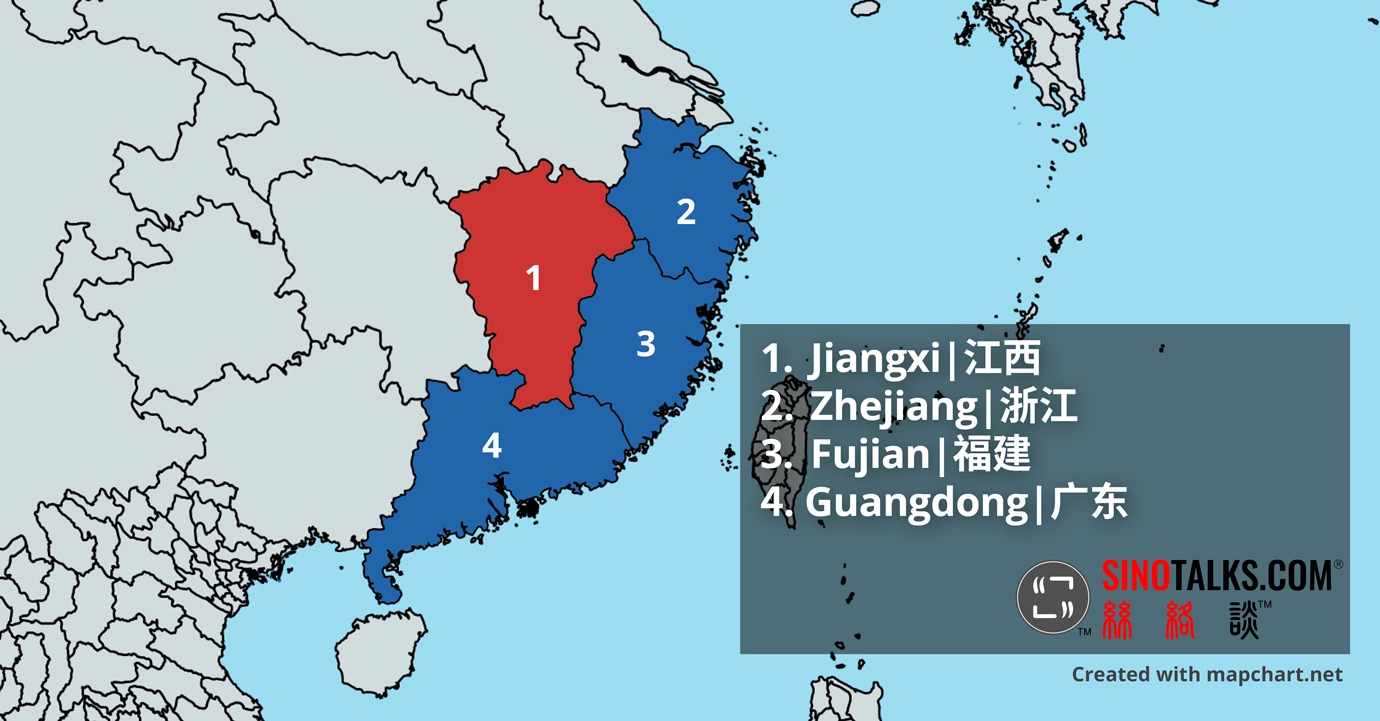How a Chinese Province Defied the National Trend and Gained Population Growth†
Table of Contents
- Jiangxi’s Population Growth
- Economic Progress as the Primary Driver
- Useful Lessons for Other Regions
Estimated Reading Time
- 6 min

(Publicdomainpictures.net)
Jiangxi, an inner Chinese province neighboring three prosperous coastal provinces, i.e., Zhejiang, Fujian, and Guangdong (see Map), has defied China’s national population decline to gain population growth. What is Jiangxi’s recipe for success? Can useful lessons be derived from this success and adopted by other regions in China?

Jiangxi’s Population Growth
China has reported that its population was 1,411.75 million at the end of 2022, with a decrease of 850,000 people compared with the previous year. Despite this national decline, Jiangxi and four other provinces, namely, Chongqing, Gansu, Guangxi, and Qinghai, have recorded population growth ranging from 9,000 (in Chongqing) to 105,800 people (in Jiangxi).
Jiangxi’s secrets for achieving the highest population growth in China deserve a close examination. According to official data, among the 105,800 people added to Jiangxi’s population, the addition of 11,300 people was due to “natural growth” (i.e., the number of new births minus the number of deaths), while the remaining growth of 94,500 people has been attributed to “mechanical growth” (i.e., the net population inflow). This suggests that Jiangxi has certain strengths drawing people from other regions to reside in this province.
Economic Progress as the Primary Driver
According to various officials and researchers in Jiangxi, the province’s net population inflow was partly due to the return of people who used to work in coastal regions, where opportunities were prevalent until the outbreak of COVID-19. However, the primary driver of this net inflow was Jiangxi’s impressive economic progress in recent years, as best reflected in its ability to achieve a 4.7% GDP growth rate in 2022, a rate that no other province in China, with the exception of Fujian, attained that year.
“Two main factors have contributed to Jiangxi’s economic progress: geographical advantages and policy support.”
Two main factors have contributed to Jiangxi’s economic progress: geographical advantages and policy support.
Jiangxi’s proximity to Fujian, the Yangtze River Delta, and the Pearl River Delta has made the province an optimal choice for businesses that need to expand or relocate their current operations. These geographical advantages are enhanced by the province’s greatly improved networks of highways and high-speed rail that can offer excellent transportation and logistics support.
In addition, the provincial government’s policy support for business development has addressed various aspects ranging from the development of strategic emerging industries to foreign trade and cross-border e-commerce.
- Strategic Emerging Industries
In its Five-Year (i.e., 2021-2025) Plan for the High-Quality Development of Manufacturing Industries, Jiangxi has set the goal to, inter alia, focus on strategic emerging industries such as electronic information and new energy industries. As a result of related supportive measures, 2022 saw a rise in the operating incomes of the province’s electronic information industry and new energy industries (e.g., lithium battery and photovoltaic industries) to RMB 1.03 trillion (an increase of 23.7%, compared with 2021) and RMB 406.51 billion (an increase of 120.3%, compared with 2021), respectively.
- Foreign Trade & Cross-Border E-Commerce
In 2022, the total value of Jiangxi’s foreign trade was RMB 671.3 billion (a 34.9% increase from the previous year). Of this amount, RMB 508.84 billion were exports (a 38.7% increase from the previous year) while RMB 162.46 billion were imports (a 24.2% increase from the previous year). With this scale of exports and imports, Jiangxi was ranked 15th, compared with 30 other provinces, municipalities, and autonomous regions in mainland China. In terms of the growth rates in exports and imports in 2022, the province was ranked the sixth and seventh, respectively. These impressive trends reflect the positive impact of various measures—such as reduction of taxes and fees as well as simplification of approval processes—taken by Jiangxi to facilitate foreign trade.
Measures related to foreign trade, together with those focusing on the incubation of cross-border e-commerce platforms and enterprises, have also led to the rapid development of Jiangxi’s cross-border e-commerce in recent years. In 2020, the province’s total import and export volume of cross-border e-commerce reportedly reached RMB 2.63 billion (an exponential 323.7-fold increase, compared with the previous year), leading to the province’s being ranked 13th in the country versus 25th in 2019.
Useful Lessons for Other Regions
Jiangxi’s economic progress, as a driver for the province’s net population inflow, is likely to inspire other regions of China to follow suit. While Jiangxi’s geographical advantages are difficult to replicate as they are inherently determined by its unique location, the province’s policy support for businesses, especially foreign trade and cross-border e-commerce, can serve as important reference points for other regions.
In fact, taking cross-border e-commerce as an example, in January 2023, the government of Hangzhou, the capital city of Zhejiang, Jiangxi’s neighbor, announced the release of funds and other incentives to help incubate platforms, businesses, personnel, and other supportive systems in this sector.
“Against this backdrop, the recent decision of China’s national legislature to revise the Foreign Trade Law by deleting Article 9 is particularly worth noting.”
However, less prosperous regions are unlikely to be in the position to offer such monetary incentives. Against this backdrop, the recent decision of China’s national legislature to revise the Foreign Trade Law by deleting Article 9 is particularly worth noting. The article read:
A foreign trade operator engaged in the import and export of goods or technology should go through recordation and registration with the department of the State Council overseeing foreign trade or its entrusted institution, unless laws, administrative regulations, or rules [issued by] the department of the State Council overseeing foreign trade do not require such recordation or registration. Specific measures for the recordation and registration shall be formulated by the department of the State Council overseeing foreign trade.
Where a foreign trade operator fails to go through the recordation and registration in accordance with [legal] provisions, the customs will not handle the customs declaration, inspection, and release procedures for [the operator’s] imported or exported goods.
[emphasis added]
The deletion of the above article means that the above-mentioned recordation and registration processes are no longer required in the entire country. This marks a significant step towards more openness for foreign trade.
All these measures related to cross-border e-commerce and foreign trade will help boost the economy and thereby, “mechanical growth” of the population. The resulting prosperity may also create more incentives for prospective parents to consider having more children. Yet, truly effective incentives are those meaningful reforms that give hope that future generations will live in a society where everyone counts statistically and substantively.
† The citation of this article is: Dr. Mei Gechlik, How a Chinese Province Defied the National Trend and Gained Population Growth, SINOTALKS.COM®, In Brief No. 29, Feb. 22, 2023, https://sinotalks.com/inbrief/china-province-population.
The original, English version of this article was edited by Nathan Harpainter. The information and views set out in this article are the responsibility of the author and do not necessarily reflect the work or views of SINOTALKS®.



